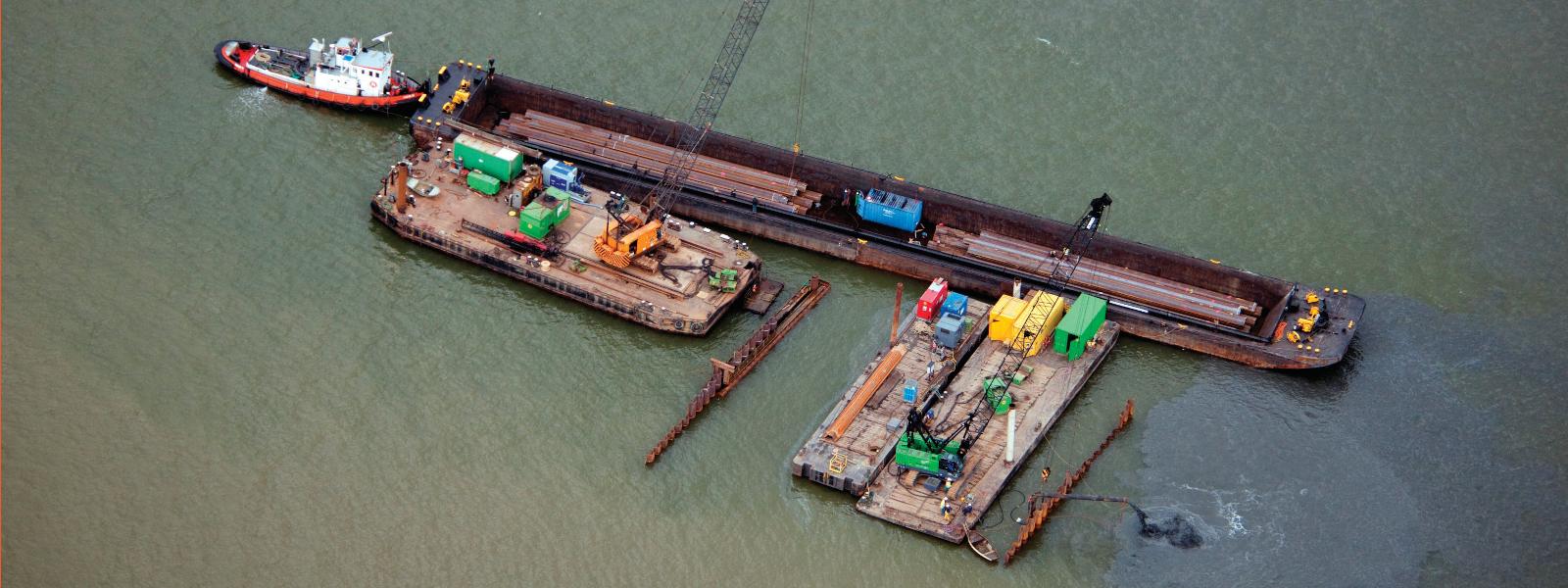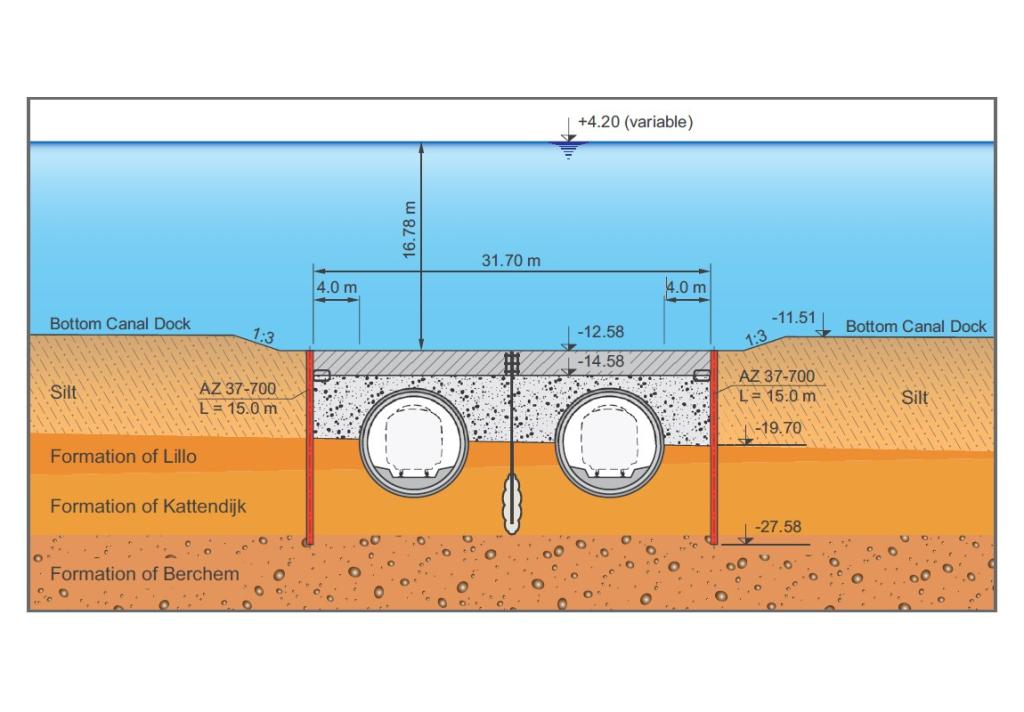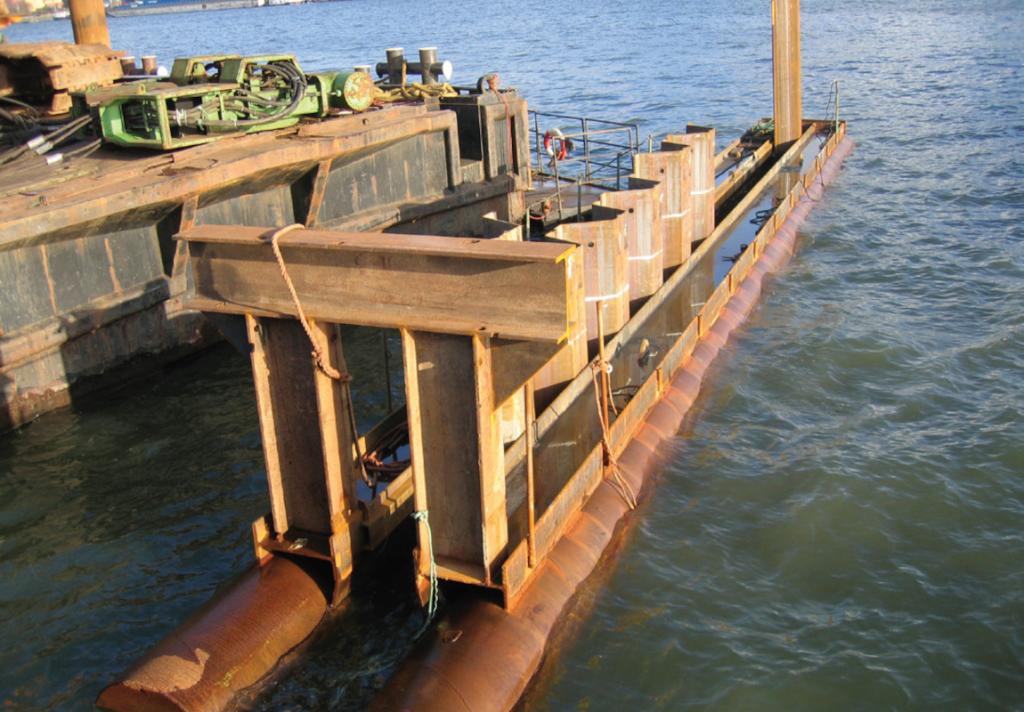Liefkenshoek rail link, Antwerp, BE | 2008
A solution for Antwerp's growing freight traffic
The Liefkenshoek rail link, currently the biggest infrastructural project in Belgium, is forging ahead in the Port of Antwerp since its start in November 2008. Connecting the port installations on the left bank of the River Scheldt and the Antwerp-North main railway hub on the right bank, it will provide a solution for the growing freight traffic in this area.
The 16.2 km long double-track railroad will contain two side by side single-track tunnels undercrossing the river Scheldt and the B1-B2 Canal Dock. The tunnels with an internal diameter of 7.3 m will be created by Tunnel Boring Machines (TBMs) over a distance of 6 km each.


 English
English
 French
French



